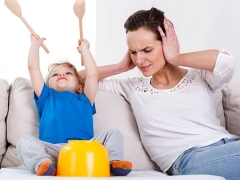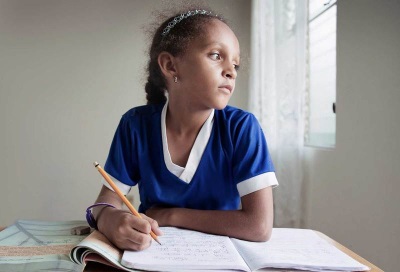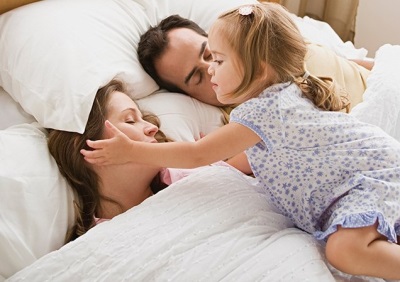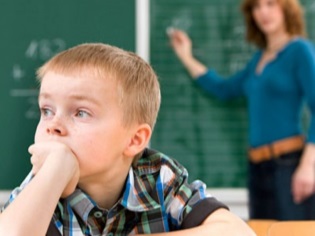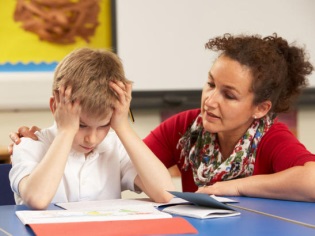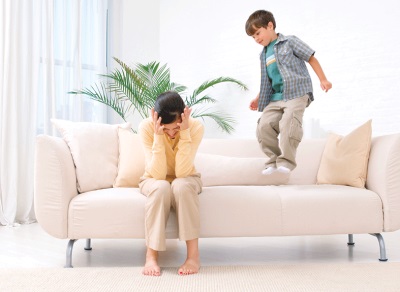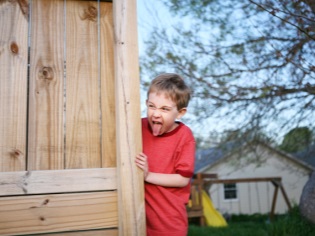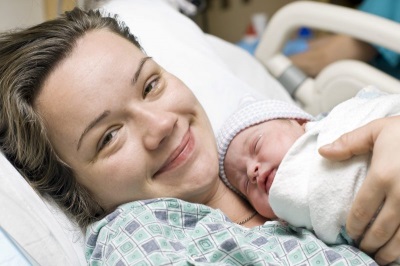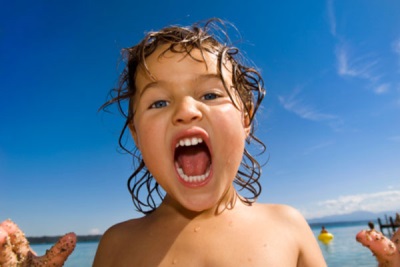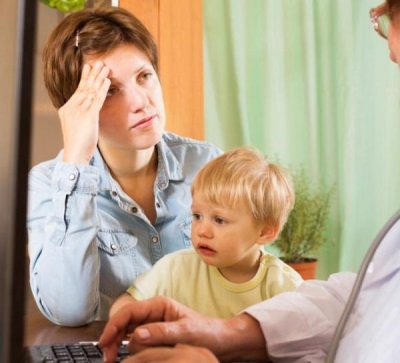Symptoms and signs of hyperactivity in a child
Every child is active and inquisitive, but there are children whose activity is increased compared with their peers. Can these children be called hyperactive or is it a manifestation of the child’s character? And is the child's hyperactive behavior normal or does it require treatment?
What is hyperactivity
So abbreviated as attention deficit hyperactivity disorderWhich is also denoted by the abbreviation ADHD. This is a very common disorder of the brain in childhood, which is also present in many adults. According to statistics, 1-7% of children have hyperactivity syndrome. In boys, it is diagnosed 4 times more often than in girls.
Timely recognized hyperactivity, which requires therapy, allows the child to form normal behavior and better adapt to other people in the team. If, however, to leave ADHD in a child without attention, it persists at an older age. A teenager with such a violation acquires school skills worse, is more prone to antisocial behavior, he is hostile and aggressive.
Signs of ADHD
Not every active and easily excited child belongs to the category of children who have hyperactivity syndrome.
In order to diagnose ADHD, the main symptoms of this disorder should be identified in the child, which manifest themselves:
- Attention deficit.
- Impulsiveness.
- Hyperactivity
Symptoms usually occur before the age of 7 years. Most often, parents notice them when they are 4 or 5 years old, and the most frequent age period for a specialist is 8 years or older, when the child is faced with many tasks at school and at home, where concentration and independence are needed. Babies who are not yet 3 years old are not immediately diagnosed. They are being watched for some time to make sure that ADHD is present.
Depending on the prevalence of specific signs, there are two subtypes of the syndrome - attention deficit and hyperactivity. Separately, a mixed ADHD subtype is isolated, in which the child has symptoms and attention deficit and hyperactivity.
Attention deficits:
- The child cannot concentrate on objects for a long time. He often has careless mistakes.
- The child does not manage to keep attention for a long time, which is why he is uncollected during the execution of the task and often does not complete the tasks to the end.
- When a child is addressed, the impression is that he is not listening.
- If you give a child a direct instruction, he either doesn’t carry it out or starts fulfilling and doesn’t finish.
- The child is difficult to organize their activities. He has observed frequent switching from one class to another.
- The child does not like tasks that require long mental stress. He tries to avoid them.
- The child often loses the things he needs.
- The kid is easily distracted by extraneous noise.
- In everyday affairs, a child has an increased forgetfulness.
Manifestations of impulsivity and hyperactivity:
- The child often gets out of place.
- When a child is worried, he moves his legs or arms intensively.In addition, the baby periodically shrinks in the stool.
- He rises from his seat very sharply and often runs.
- It is difficult for him to participate in quiet games.
- His actions can be described as “instituted”.
- During classes, he can shout from the place or make noise.
- The child answers before he hears the question completely.
- He cannot wait for his turn during a lesson or a game.
- The child constantly interferes with other people's activities or their conversations.
To make a diagnosis, a child should have at least 6 signs from the above, and they should be marked for a long time (at least six months).
How does hyperactivity manifest at an early age
Syndrome of hyperactivity is detected not only in schoolchildren, but also in children of preschool age and even in infants.
The smallest such problem is manifested by the following symptoms:
- More rapid physical development when compared with peers. Infants with hyperactivity turn over much faster, crawl and start walking.
- The appearance of whims when the child is tired. Hyperactive kids before bedtime are often excited and become more active.
- Shorter sleep duration. A baby with ADHD sleeps much less than it should be at its age.
- Difficulties with falling asleep (many babies need to be swayed) and very sensitive sleep. The hyperactive child reacts to any rustling, and if he wakes up, it is very difficult for him to fall asleep again.
- Very violent reaction to the loud sound, the new environment and unfamiliar faces. Because of such factors, kids with hyperactivity get excited and start to be more naughty.
- Quick attention switching. Having offered the baby a new toy, mother notices that the new object attracts the attention of the crumbs for a very short time.
- Strong attachment to mom and fear of strangers.
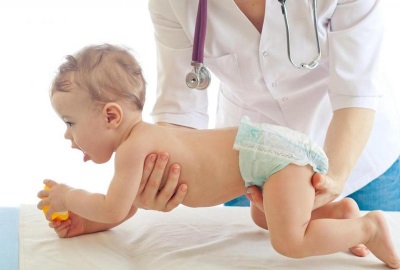
ADHD or character?
The increased activity of the child may be a manifestation of his innate temperament.
Unlike children with ADHD, a temperamental healthy child:
- After active running or other activity, he sits or lies calmly, that is, he can calm down on his own.
- Normally falls asleep, and the duration of his sleep corresponds to the age of the baby.
- Sleep long and quietly at night. If it is a baby, then he wakes up to feed, but does not cry and falls asleep quickly enough.
- Understands the concept of "dangerous" and feels fear. Such a child will not re-climb in a dangerous place.
- Quickly mastering the concept of "no".
- May be distracted during tantrums story or any subject.
- Rarely shows aggression in relation to mom or another child. The kid can share his toys, even if sometimes only after persuasion.
Causes of hyperactivity in children
Previously, the occurrence of ADHD was mainly associated with brain damage, for example, if the newborn suffered hypoxia when he was in the womb or during childbirth. Nowadays, studies have confirmed the influence on the occurrence of the syndrome of hyperactivity of the genetic factor and disorders of intrauterine development of the baby. Development of ADHD is facilitated by too early childbirth, cesarean section, low weight of the crumbs, a long anhydrous period in labor, use of forceps and similar factors.
What to do
Suspecting hyperactivity syndrome in your child, the first thing to do is to go to a specialist. Many parents go to a doctor not immediately, because they do not dare to recognize the problem in a child and are afraid of the conviction of friends. With such actions, they miss the time, resulting in hyperactivity causes serious problems with the child's social adaptation.
There are also parents who bring a completely healthy child to a psychologist or psychiatrist when they are unable or unwilling to find an approach to him. This is often observed during crisis periods of development, for example, at 2 years or during a three-year crisis. At the same time, the kid has no hyperactivity.

In all these cases, without the help of a specialist, it’s impossible to determine whether the child really needs medical care or if he has a bright temperament.
If a hyperactivity syndrome is confirmed in a child, such methods will be used in its treatment:
- Explanatory work with parents. The doctor should explain to mom and dad why the child has hyperactivity, how does such a syndrome manifest, how to behave with the child and how to raise it correctly. Thanks to such educational work, parents no longer blame themselves or each other for the child’s behavior, and also understand how to behave with the baby.
- Changing learning conditions. If hyperactivity is diagnosed in a student with poor academic performance, he is transferred to a specialized class. It helps to cope with the delay in the formation of school skills.
- Drug therapy. Drugs prescribed for ADHD are symptomatic and effective in 75-80% of cases. They help facilitate the social adaptation of children with hyperactivity and improve their intellectual development. As a rule, medications are prescribed for a long period, sometimes to adolescence.
Opinion Komarovsky
A popular doctor has encountered many times in his practice with children diagnosed with ADHD. The main difference between such a medical diagnosis and hyperactivity, as character traits, Komarovsky calls the fact that hyperactivity does not prevent a healthy child from developing and communicating with other members of society. If a child has a disease, he cannot become a full-fledged member of the team without the help of parents and doctors, learn normally and communicate with peers.
To make sure that the child is healthy or have ADHD, Komarovsky advises you to contact a child psychologist or psychiatrist, since only a qualified specialist will not only easily identify hyperactivity in a child as a disease, but also help parents understand how to raise a child with ADHD.
The well-known pediatrician recommends following guidelines when raising a hyperactive child:
- When communicating with the baby, it is important to establish contact. If required, for this child you can touch the shoulder, turn to yourself, remove a toy from his field of vision, turn off the TV.
- Parents must define specific and enforceable rules for the child, but it is important that they are always adhered to. In addition, each such rule should be clear to the child.
- The space in which the hyperactive child resides should be completely safe.
- Regime should be adhered to constantly, even if the parents have a day off. According to Komarovsky, it is very important for hyperactive children to wake up, eat, walk, bathe, go to bed and perform other usual daily activities at the same time.
- All complex tasks for hyperactive children need to be broken into parts that are understandable and easy to do.
- The child should be constantly praised, noting and emphasizing all the positive actions of the baby.
- Find what the hyperactive child is best at, and then create conditions so that the baby can do the job, getting satisfaction from her.
- Provide your hyperactive child with the opportunity to spend an excess of their energy, directing it in the right direction (for example, walking with a dog, attending sports sections).
- If you are going to shop or visit with your child, consider your actions in detail, for example, what to take with you or what to buy for your child.
- Parents should also take care of their own rest, since, as Komarovsky emphasizes, it is very important for a hyperactive baby that father and mother are calm, peaceful and adequate.
From the following video, you can learn more about hyperactive children.
You will learn about the role of parents and many important nuances by watching the video of a clinical psychologist Veronica Stepanova.
